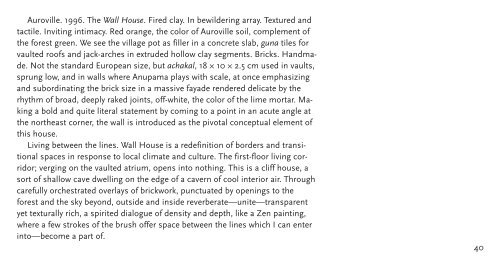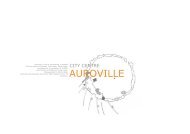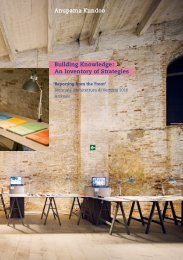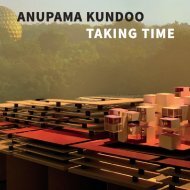Concept. Anupama Kundoo 'Feel the Ground' Venice Biennale 2012
'Feel the Ground. Wall House: One to One' was an invited installation, as part of 'Common Ground' curated by David Chipperfield for the 13th international architecture exhibition of 'la Biennale di Venezia'. Anupama Kundoo's Wall House in Auroville was constructed in full scale, making the point that architecture is a collaborative act, and that we are more common than we are different across the globe, regardless of our diversity. The curators wrote: "Kundoo, has built an ambitious, 1:1 facsimili of the Wall House, a building she designed in Auroville in India in 2000. The common ground is in its making. A team of Indian craftsmen, some of whom had never left their home country, were brought to Venice to construct the project in collaboration with staff and students from the University of Queensland, and students from IUAV in Venice, creating skills exchange across 3 continents. The final piece embodies the dialogue between construct on cultures, and also is a showcase for Kundoo's architecture, a lyrical modernism at easy with the demands of its climate."
'Feel the Ground. Wall House: One to One' was an invited installation, as part of 'Common Ground' curated by David Chipperfield for the 13th international architecture exhibition of 'la Biennale di Venezia'. Anupama Kundoo's Wall House in Auroville was constructed in full scale, making the point that architecture is a collaborative act, and that we are more common than we are different across the globe, regardless of our diversity.
The curators wrote: "Kundoo, has built an ambitious, 1:1 facsimili of the Wall House, a building she designed in Auroville in India in 2000. The common ground is in its making. A team of Indian craftsmen, some of whom had never left their home country, were brought to Venice to construct the project in collaboration with staff and students from the University of Queensland, and students from IUAV in Venice, creating skills exchange across 3 continents. The final piece embodies the dialogue between construct on cultures, and also is a showcase for Kundoo's architecture, a lyrical modernism at easy with the demands of its climate."
You also want an ePaper? Increase the reach of your titles
YUMPU automatically turns print PDFs into web optimized ePapers that Google loves.
Auroville. 1996. The Wall House. Fired clay. In bewildering array. Textured and<br />
tactile. Inviting intimacy. Red orange, <strong>the</strong> color of Auroville soil, complement of<br />
<strong>the</strong> forest green. We see <strong>the</strong> village pot as filler in a concrete slab, guna tiles for<br />
vaulted roofs and jack-arches in extruded hollow clay segments. Bricks. Handmade.<br />
Not <strong>the</strong> standard European size, but achakal, 18 × 10 × 2.5 cm used in vaults,<br />
sprung low, and in walls where <strong>Anupama</strong> plays with scale, at once emphasizing<br />
and subordinating <strong>the</strong> brick size in a massive fayade rendered delicate by <strong>the</strong><br />
rhythm of broad, deeply raked joints, off-white, <strong>the</strong> color of <strong>the</strong> lime mortar. Making<br />
a bold and quite literal statement by coming to a point in an acute angle at<br />
<strong>the</strong> nor<strong>the</strong>ast corner, <strong>the</strong> wall is introduced as <strong>the</strong> pivotal conceptual element of<br />
this house.<br />
Living between <strong>the</strong> lines. Wall House is a redefinition of borders and transitional<br />
spaces in response to local climate and culture. The first-floor living corridor;<br />
verging on <strong>the</strong> vaulted atrium, opens into nothing. This is a cliff house, a<br />
sort of shallow cave dwelling on <strong>the</strong> edge of a cavern of cool interior air. Through<br />
carefully orchestrated overlays of brickwork, punctuated by openings to <strong>the</strong><br />
forest and <strong>the</strong> sky beyond, outside and inside reverberate—unite—transparent<br />
yet texturally rich, a spirited dialogue of density and depth, like a Zen painting,<br />
where a few strokes of <strong>the</strong> brush offer space between <strong>the</strong> lines which I can enter<br />
into—become a part of.<br />
40








